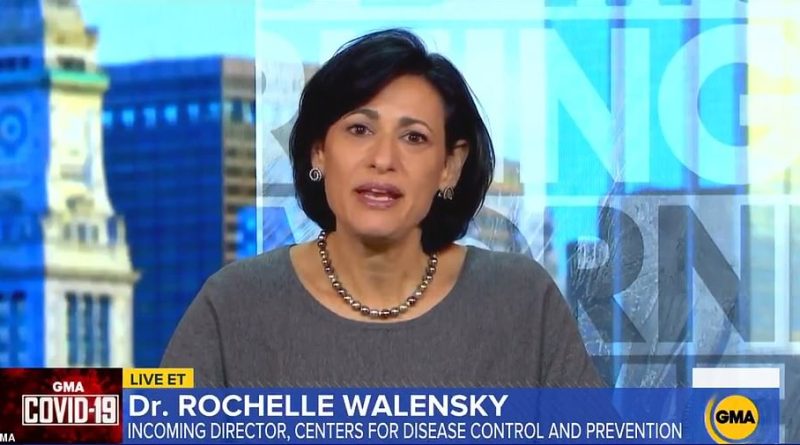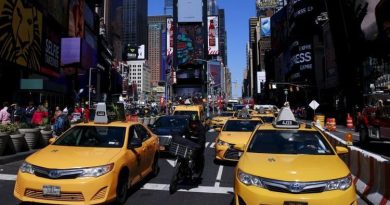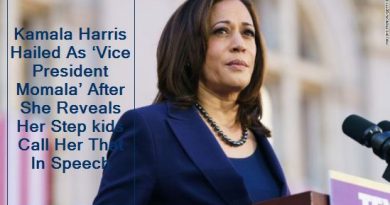Biden's CDC director says they will use military and medical students to ramp up vaccine rollout
Joe Biden’s new CDC director has said the incoming administration plans to bring in the military and medical students to ramp up the COVID-19 vaccine rollout, as just 4.5 percent of Americans have so far received a shot.
Dr. Rochelle Wallensky told Good Morning America’s George Stephanopoulos Tuesday morning that the CDC will commission military medical personnel, retirees and nursing and medical students to make sure there are enough people ‘on the ground’ to get shots into the arms of Americans.
Wallensky said they will also make the vaccine more ‘accessible’ by launching mobile vans and giving pharmacies doses as she vowed that the incoming administration will focus on ‘the science’.
Biden announced an ambitious target Thursday to get 100 million Americans vaccinated in his first 100 days in office as part of his $1.9 trillion ‘American Rescue Plan’.
So far, the US has administered just 14.7 million shots of the vaccine 37 days on from the day the first American was given the first dose on December 14, according to data from Bloomberg.
The CDC records that 1.6 million people have received both doses of the vaccine and so now have maximum protection against the virus.
Worldwide, more than 44 million shots have been given across 51 countries. Israel’s efforts dwarf that of the US and other countries with a staggering 28.5 percent of the population having received a shot.
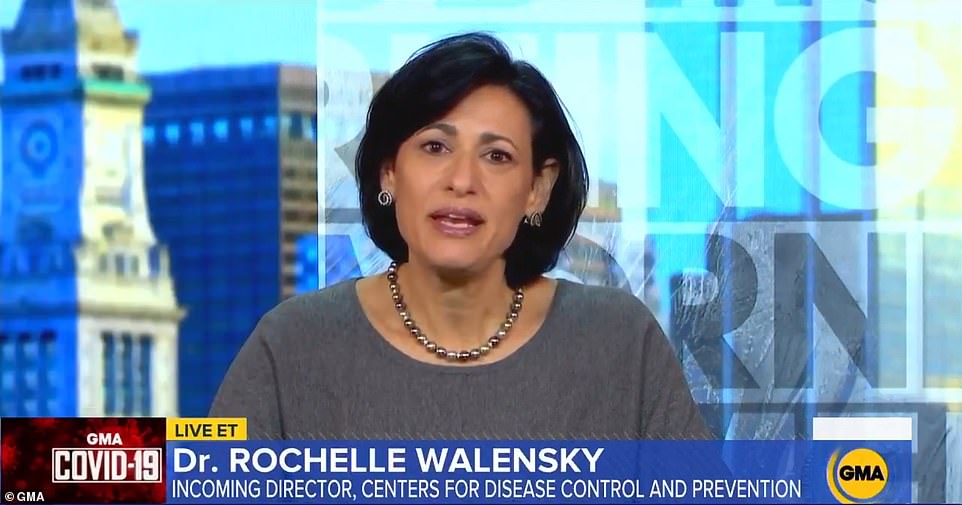
Joe Biden’s new CDC director Dr. Rochelle Wallensky has said the incoming administration plans to bring in military and medical students to ramp up the COVID-19 vaccine rollout, as just 4.5 percent of Americans have so far received a shot
This makes Biden’s target a huge uplift on the current rate of rollout but Wallensky said it can be achieved with their ‘really ambitious but doable plan’.
Part of this plan is increasing the number of people able to administer the shot, she said.
‘We need to make sure we have the people – the vaccinators – on the ground,’ she said.
‘We’re going to commission medical personnel, we’re going to use military medical personnel, we’re going to look at retirees, we’re going to look at upper level nursing students and medical students so that we can really get enough people to be doing the vaccination.’
Wallensky said there is also a focus on ensuring the right supply reaches the right states and on increasing vaccination sites where people can go to get the shot.
‘We need to really understand what our supply looks like – how many doses are going to go to which states – so we can make sure the eligibility is on track, so we don’t have long lines, long waits but that we’re vaccinating people in the proper cue,’ she said.
‘And then we need to make sure we can bring the vaccine to the people to many many places these will be community vaccination centers, they will be mobile vans, they will be federally qualified health centers and pharmacies. ‘So we need to make it really accessible.’
She added that the plan ‘is underpinned with equity’ so the administration will ensure ‘we’re equally and equitably getting this vaccine across the country.’
Wallensky took a thinly-veiled swipe at her predecessors saying it was time to ‘reset the stage’ and be transparent with the American public about the pandemic.
‘We need to reset the stage here. We need to make sure the country, the people, understand that this pandemic is now going to be addressed with science, with trust, with transparency, with communication of exactly where we are to the American people,’ she said.
‘Yes I will be sworn in tomorrow but the work has been happening since I was named and we’ve worked really hard to make sure we can hit the ground running and make sure that we can get this country back to health.’
Wallensky admitted that the Trump administration’s refusal to cooperate with a peaceful transition had made the situation more challenging for the incoming team.
‘You know I’ve been working closely with the agency review team. That team has been really helpful for me with trig to get up to speed with where we are,’ she said.
‘Certainly communication in many of the other agencies might have been better but we have been hitting the ground running and that is how we intend to move forward.’
The infectious disease expert said she didn’t ‘want to judge where things were’ and acknowledged that it has been ‘historic’ to be faced with a task of rolling out two vaccines within a year.
‘We have the hard job of making sure those now get into arms,’ she said.
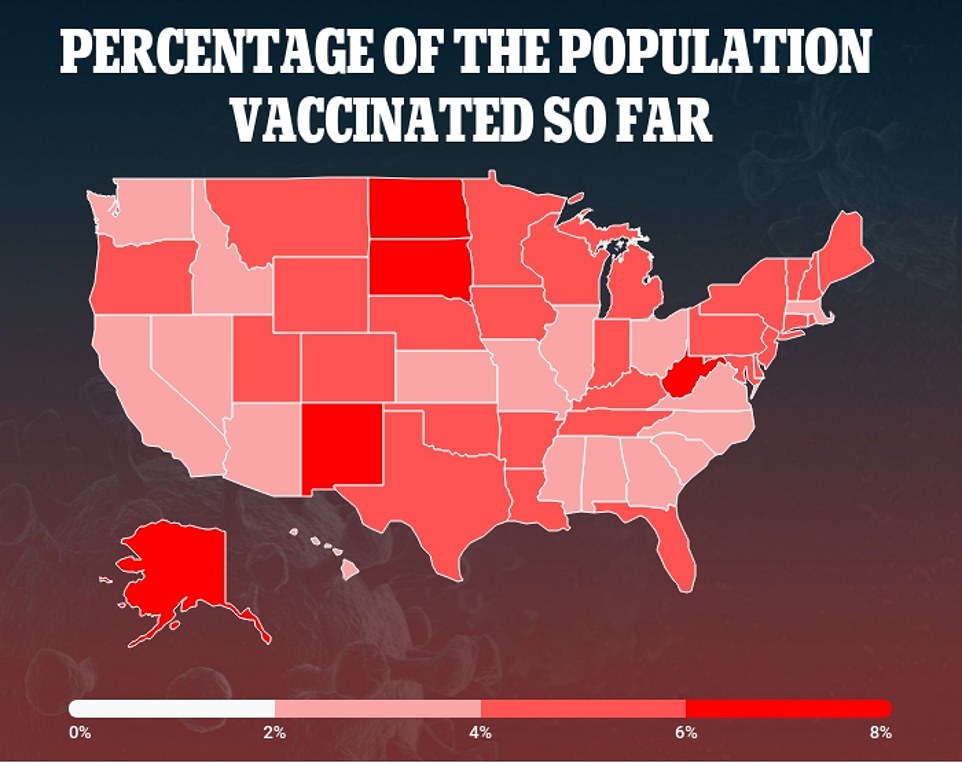

‘This plan makes sense and I’m looking forward to implementing it.’
Wallensky doubled down on the Biden administration’s announcement that it will overturn Donald Trump’s eleventh-hour plan to lift the travel ban on visitors from the UK, Brazil and Europe saying she doesn’t think it is ‘the time.’
Officials had told Reuters the outgoing preside
nt had planned to remove the current restrictions starting on January 26 saying it ‘is the best way to continue protecting Americans from COVID-19 while enabling travel to resume safely’.
But just 90 minutes later the president-elect’s press secretary Jen Psaki tweeted that Biden will quash the plan and likely put in place increased restrictions.
‘With the pandemic worsening, and more contagious variants emerging around the world, this is not the time to be lifting restrictions on international travel,’ Psaki tweeted.
‘On the advice of our medical team, the Administration does not intend to lift these restrictions on 1/26. In fact, we plan to strengthen public health measures around international travel in order to further mitigate the spread of COVID-19.’
The current restrictions bar nearly all non-US citizens who have been in Brazil, the UK, Ireland and the 26 countries of the Schengen area in Europe that allow travel across open borders within the last 14 days.
Wallensky reinforced Psaki’s stance saying: ‘If you look at the fatalities of 400,00 that we’e likely to hit today. If you look at the cases across this country. I don’t think now is the time to encourage people to get on international flights to encourage people to mobilize.’
‘I think now is the time to really buckle down, double down our efforts and I don’t expect that we will be lifting travel restrictions and if anything I think we can expect that they might tighten especially in the context of variants that we are hearing about.’
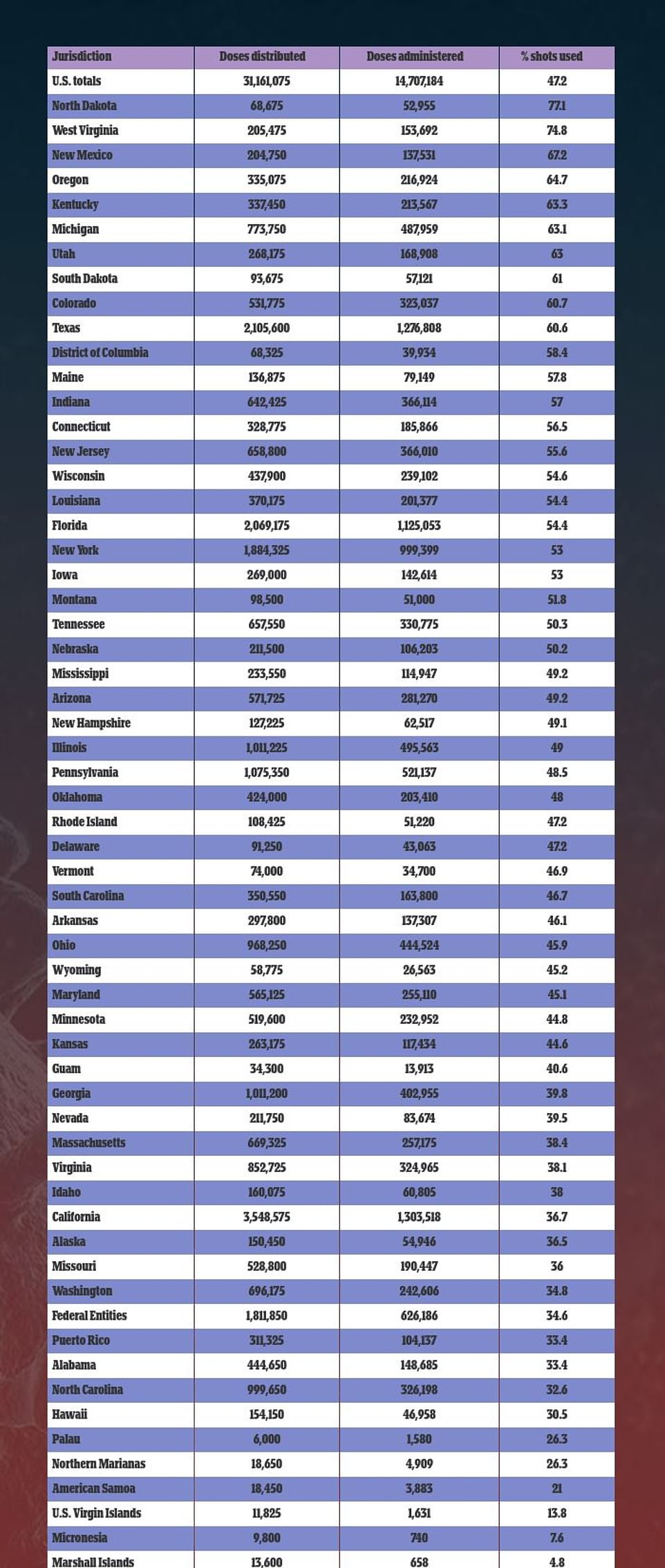
So far, the US has administered just 14.7 million shots of the vaccine 37 days on from the day the first American was given the first dose on December 14
Wallensky does not need senate confirmation for her role so will become CDC director as soon as Biden takes office Wednesday, kicking off the president-elect’s promise to ramp up the nation’s vaccination plan from the get-go.
To date, just 14.7 million doses have been administered across the US, with an average of 776,901 doses administered per day in the last week, according to data from Bloomberg.
The Trump administration had set a goal of inoculating 20 million Americans by the end of December, while Trump even claimed they would reach 100 million vaccinations in that time frame.
The federal government has failed to deliver on its target, distributing shy of 31.2 million doses to the states as of Monday.
But state rollouts have also been plagued by issues in administering the doses once they reach officials on the ground.
So far, just 47.2 percent of all doses that have reached states have been administered to the American public with more than half sitting unused.
North Dakota has emerged as America’s unlikely leader, racing ahead of most of the nation in the vaccine rollout.
The state has administered 77.1 percent of all doses delivered – the highest proportion of all states.
Of the 76,275 doses received from the federal government, 52,955 have gone into North Dakotan arms.
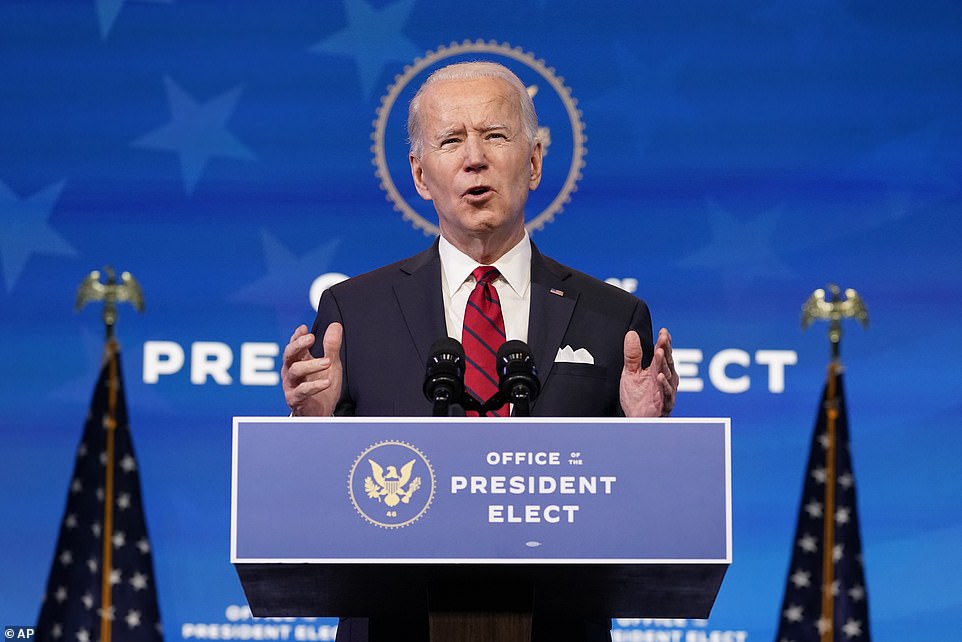
President-elect Joe Biden pledged to get 100 million Americans vaccinated in his first 100 days in office
A total of 3,222 vaccines were administered on January 14 alone, according to its latest data.
Nearly six percent of its population has had their first shot, and nearly one percent have already received their second.
State officials acknowledge that North Dakota’s small population size is an advantage.
But the state also started preparing ahead of the vaccine approval, by training healthcare workers before doses arrived.
It has also set up a flexible plan to let people 65 or older, people with two or more underlying conditions, and child care and school workers get priority access to vaccines while other states struggled with slow rollout due to very narrow eligible groups.
West Virginia has also fared well with the rollout having administered 74.8 percent of all doses delivered.
Governor Jim Justice said his state was the ‘diamond in the rough’ for vaccine rollout in a Face the Nation interview Sunday.
‘We’re saving all kinds of lives. We’re putting our kids back in school. West Virginia has been the diamond in the rough that a lot of people have missed,’ he said.
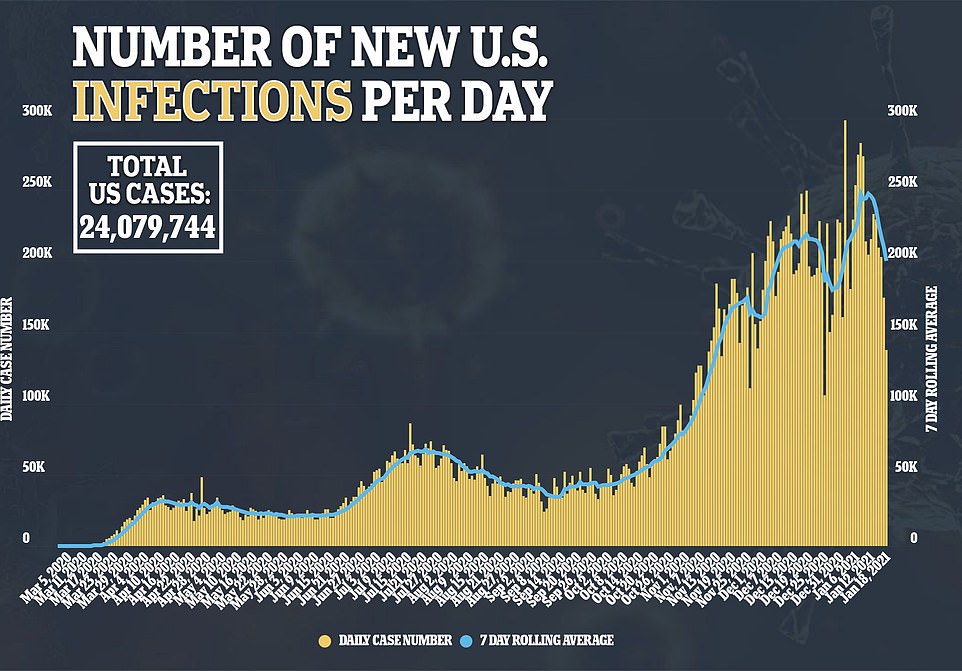
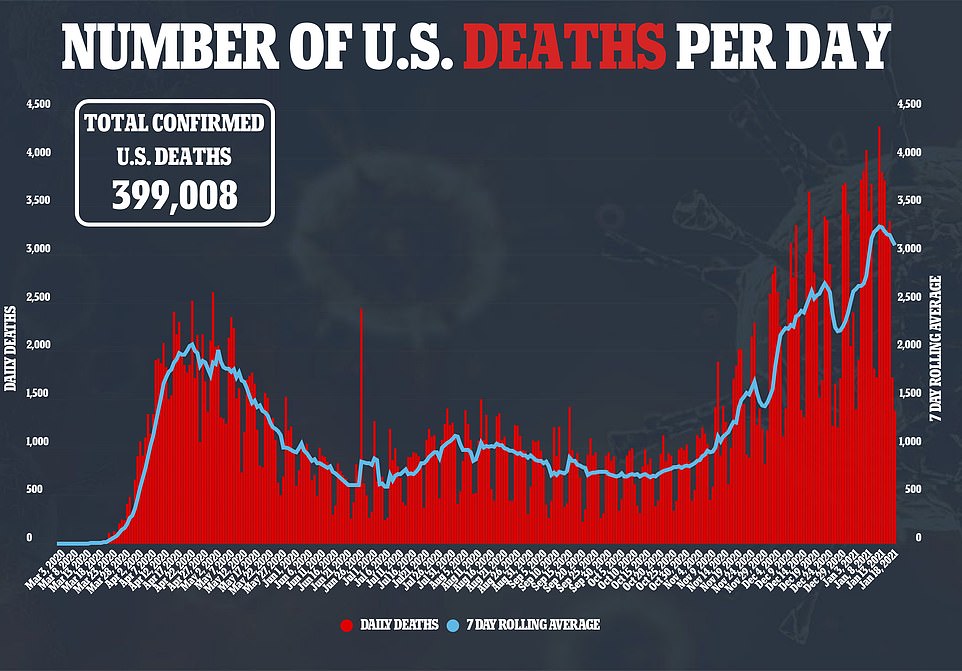
‘We are practical thinking people with a lot of really smart people here getting it done.’
Much of its success has been put down to the state’s decision to reject a federal partnership with CVS and Walgreens and instead enlist mom-and-pop pharmacies to vaccinate residents on a local level.
New Mexico is also faring well, having administered 67.2 percent of doses delivered.
Governor Michelle Lujan Grisham said the state is already seeing hospitalizations declining.
‘We absolutely can see light at the end of this very long, dark tunnel,’ she said in the news conference Friday.
‘The way to the other side of this pandemic is absolutely these treatments and vaccines.’
But officials have said they are disappointed with the amount they are being given by the federal government.
A New Mexico Health Department spokesman said Friday that residents deserve clarity and transparency from the government about the rollout.
Oregon is also racing ahead of the national average rollout with 64.7 percent doses administered while Kentucky is close behind with 63.3 percent.
By contrast, the Marshall Islands has administered just 4.8 percent, Micronesia 7.6 percent and the US Virgin Islands 13.8 percent of all doses received from the government.
States such as California and New York – which are both highly populated and have been hard hit by the pandemic – are also slow to get doses in arms.
California has administered just 36.7 percent of its doses while the death rate soars in the state with an average of 525 people now dying every day.
In New York, just 53 percent of doses have been administered while Governor Andrew Cuomo has pushed the blame onto the federal government and has asked for federal permission to order doses directly from Pfizer.
While the US has administered the highest number of doses overall, it is flailing behind countries including Israel, the UAE and the UK in terms of the proportion of people who have received a dose.
Less than 4.5 percent of Americans have been vaccinated, compared to 28.5 percent of people in Israel.
On Monday, Israel vaccinated a record 186,000 in 24 hours, including 114,000 people getting a second dose and 72,000 a first dose.
Officials announced a new target of 250,000 people vaccinated each day and expanded eligibility to Israelis over the age of 40.
In the UAE, 18.3 people per 100 have received a dose, and has vowed to vaccinate half the population by the end of March.
Meanwhile the UK has rolled out almost 6.8 doses per 100 people.
But the nation’s capital has vaccinated the lowest number of priority residents – over-80s, vulnerable, care home residents and NHS workers – with just over 417,000 doses given out in London.
While the US at first held back second doses of the vaccine, the UK moved forward administering all available doses.
However, this has also faced issues with some people who received the first dose now not receiving the second at the optimal time.
Biden first unveiled his goal to ramp up the vaccine rollout Thursday as part of his $1.9 trillion ‘American Rescue Plan’ which includes about $400 billion to tackle COVID-19.
He doubled down on the target Friday insisting ‘we can get it done’ as he vowed to ‘manage the hell out of this operation’.
Biden maintained that his administration can accomplish the goal through a five-step plan that includes: getting more people vaccinated, increasing vaccination sites, increasing supply, mobilizing the personnel to administer it, and ensure Americans have confidence in the vaccine.
By using the Defense Production Act, Biden said he can boost supplies of the vital vaccine
He said he will also work wi
th the Federal Emergency Management Agency to set up 100 vaccination centers across the country by the end of his first month in office.
And local pharmacies will also be mobilized to get more shots in arms and will ‘increase vaccine supply and get it out the door as soon as possible.’
Biden instructed states to start giving COVID-19 vaccines to all essential workers and Americans over 65 immediately, to stop doses from lingering on shelves or going to waste.
This comes as the US inches closer to the grim total of 400,000 deaths.
Cases have now topped 24 million and 399,008 Americans have died, with another 1,381 dying Monday.
The seven-day rolling average death toll now stands at 3,094.
Meanwhile, 123,848 people were hospitalized with COVID-19 Monday.
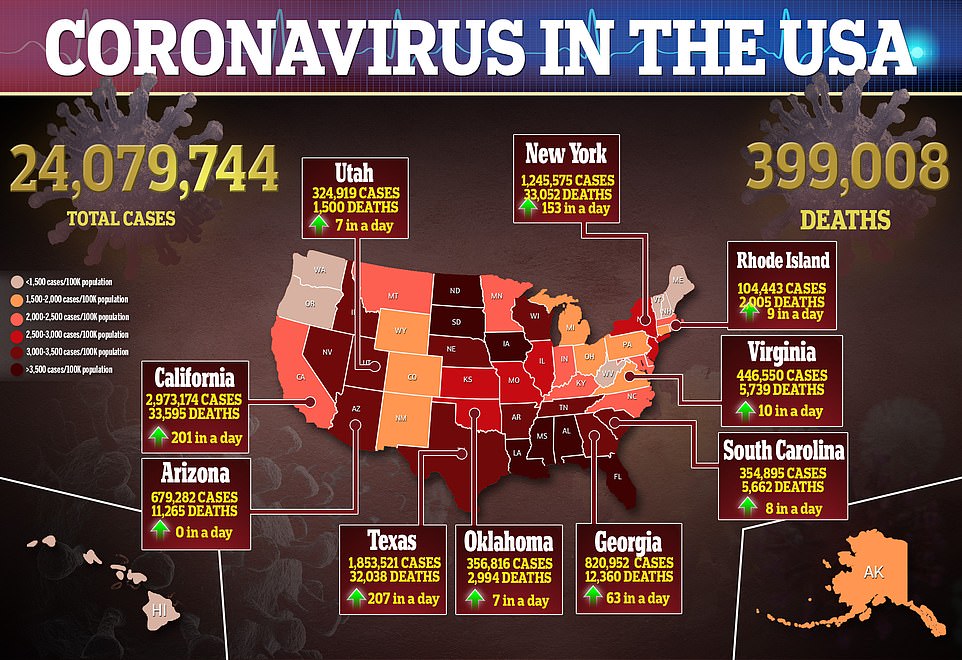
————————————————————————————————————-
North Dakota emerges as unlikely leader in vaccine rollout race
North Dakota has emerged as America’s unlikely leader in the battle against the coronavirus, racing ahead of most of the nation in the vaccine rollout and battling back from being the worst COVID hotspot in the nation with an 80 percent decline in active cases since mid-November.
And while some states like California are floundering with vaccination rollout, using a meager 36.7 percent of doses distributed to it, North Dakota is flying through the doses sent to it by the federal government, using 78 percent of its allotted doses and vaccinating just shy of seven percent of its population.
North Dakota administered 3,222 vaccines on January 14 alone, according to its latest data.
Nearly six percent of its population has had their first shot, and nearly one percent have already received their second.
State officials acknowledge that North Dakota’s small population size is an advantage.
But it also gave health care workers a head-start with training before vaccine doses arrived, and has set up a flexible plan to let people 65 or older, people with two or more underlying conditions, and child care and school workers get priority access to vaccines.
Meanwhile, the state has 1,377 active cases of COVID-19 as of Monday – just a little over 10 percent as many as it saw at its November peak of 10,195.
Deaths in North Dakota continue to climb, but have leveled off since November.
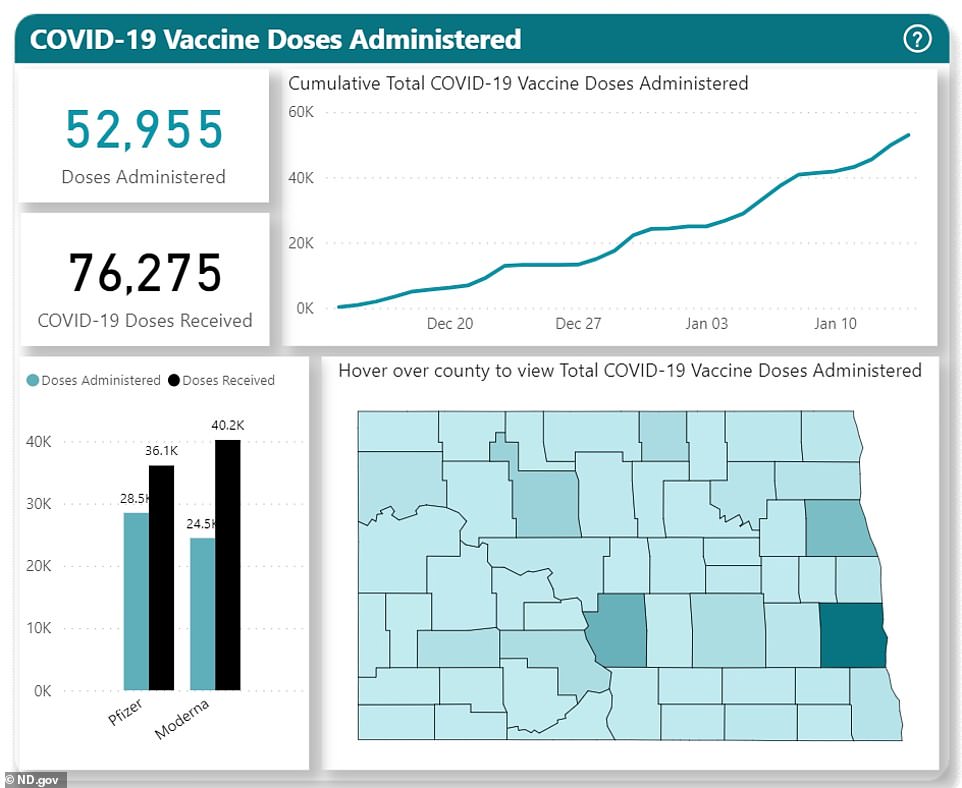
North Dakota has given nearly 53,000 of the 76,275 doses sent to it, and kept up a consistent flow of administering vaccines since its first doses arrived last month (pictured), according to the state’s health department
Throughout much the nation, a game of federal and state he-said-she-said continues, and is doing little to speed the sluggish rollout.
Houston, Texas, officials say they are receiving sporadic shipments of small numbers of vaccine doses.
‘Right now, having (doses) one day and then running out, it just creates a lot of chaos,’ said Galveston County health director Dr Philip Keiser on Monday, according to Houston Public Media.
California and New York may be known for their top-notch hospitals and medical schools, but they are struggling to get people vaccinated amid the COVID-19 crisis.
New York Governor Andrew Cuomo has blamed the federal government for his state only getting 5.14 percent of its population vaccinated by Monday, and asked for federal permission to order doses directly from Pfizer.
But the Empire State has only used a little over half (53 percent) of what the Trump administration has shipped to it, and its stiff plan for prioritizing people saw precious doses of vaccine thrown out earlier this month.
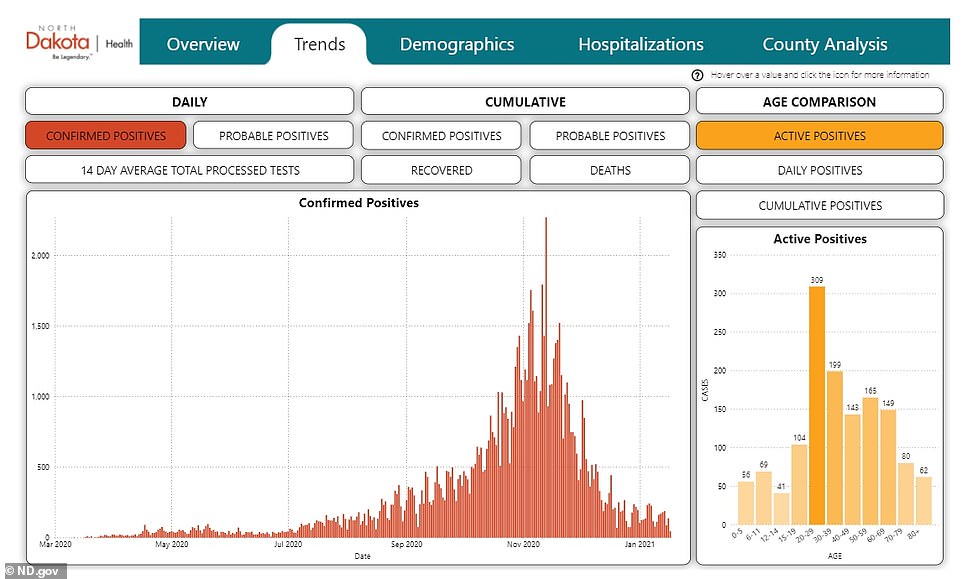
Active coronavirus cases have fallen by 80% and the number of new daily infections in the state is a fraction of what it had been a month ago when North Dakota was among the nation’s top hotspots
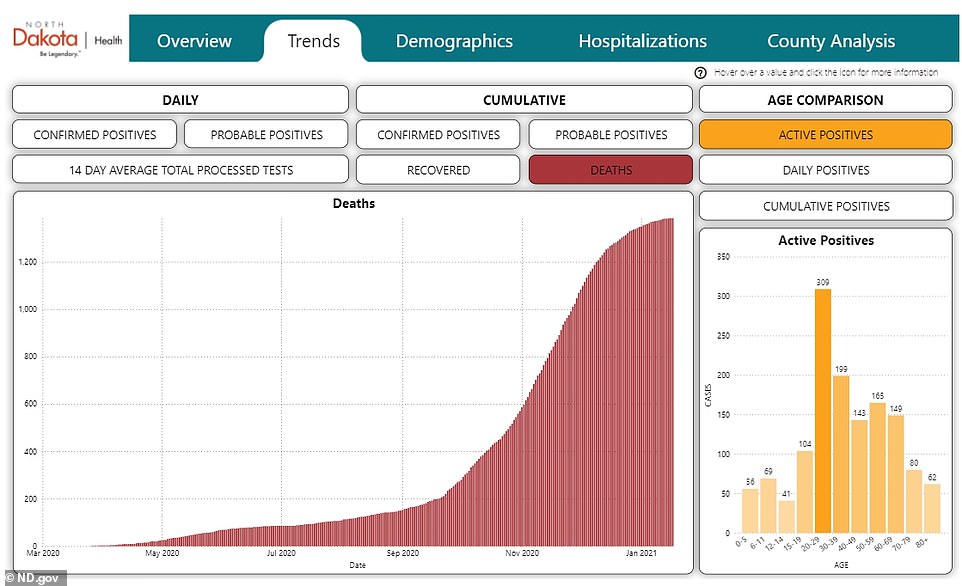
Cumulative deaths have increased in North Dakota, but the state has drastically bent the curve of fatalities since it climbed steeply last month, reaching a peak of 499 deaths in November, followed by 278 in December and 37 so far in January
California lags even further behind, vaccinating just 3.3 percent of its population with the massive allotment of 3.5 million doses sent to it by the federal government.
And in Florida, which was the third state to reach one million COVID-19 cases, more than 40,000 people are overdue for their second dose of COVID-19 vaccine – a worrying sign that poor organization could leave at-risk residents unprotected.
About 31.1 million doses of coronavirus vaccines have been sent to US states by the federal government, according to tracking from Bloomberg.
While West Virginia races to the head of the pack, vaccinating nearly nine percent of its population in just a month, California and Alabama rank worst, getting shots in the arms of just 3.3 percent and 2.7 percent of their residents, respectively.
Mass vaccination sites opened in larger states like New York, California and Florida, but rates of shot administration remain low.
Some of the states that have most vocally blamed the federal government for the vaccine rollout are among the slowest to use the doses sent to them.
Meanwhile, Southern and Sun Belt states are struggling. Alabama and Arizona have each vaccinated just 2.7 percent of their populations.
That’s particularly worrisome for Arizona, which has had more coronavirus infections per capita than any where else in the world.

